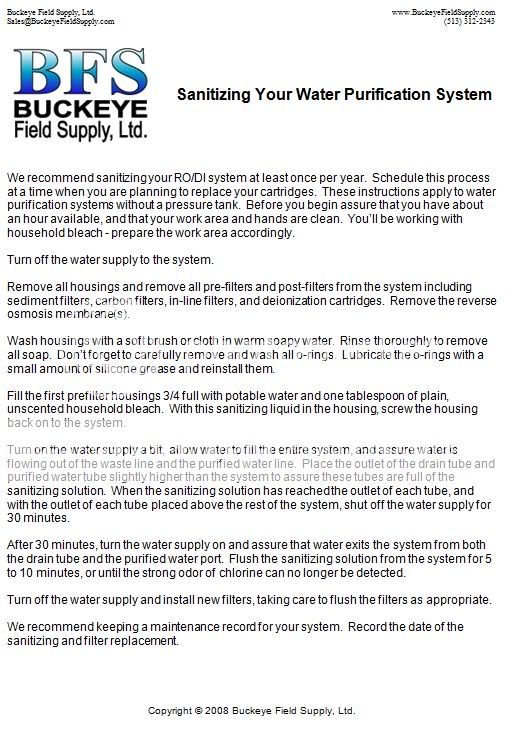That doesnt make any sense, there is nothing in the water that should allow algae to grow. Plants need more than water to survive and the point of RO/DI is to remove the excess nutrients that all for them to grow
+1 l-fish
I know I have placed RODI water in a empty distilled water container and left it out exposed to light cycles for weeks and when I open it, it is as fresh as the moment I filled it.
As for the first bit of water being "bad", we call that "short cycle water". We don't let our RODI systems set for long (as in weeks) between usage. So we try to draw off a quantity of water at each draw. This is why we fill a tank with RODI water above our sumps, then ATO (Auto Top Off) our evaporation water from that tank, ... to short cycle the RODI less often. If the water was very seriously bacteria loaded it would show at our TDS meters. Bacteria in water conducts electricity, as do the proteins & the chemistry which support bacteria, and would most certainly read at the meter. Pure water does not conduct electricity,.. my TDS reads .000 at the start of a cycle, as do most of our systems... this is why we do the DI stage. The reason for concern about short cycles is not bacteria it is because of the impure water resting at the input end and waste side of the RO membrane (which could contain a small trace amount of bacteria but does not have a light source) leaching into the membrane a little... tiny bit.... and then that is splitting hairs. .. and in reefing we do split hairs... for purity of water.
As Little Fish said and is qualified to know, bacteria has to have a food source... :dunno:
However all professional tips are
welcome, so don't take this as a put down, please!
Among the forum members you will find plenty of professional or retired professional members... ie: doctors, vets, engineers, chemists, biologists, scientists, micro chemists, and the list goes on. There is power in group skills and knowledge... !!

